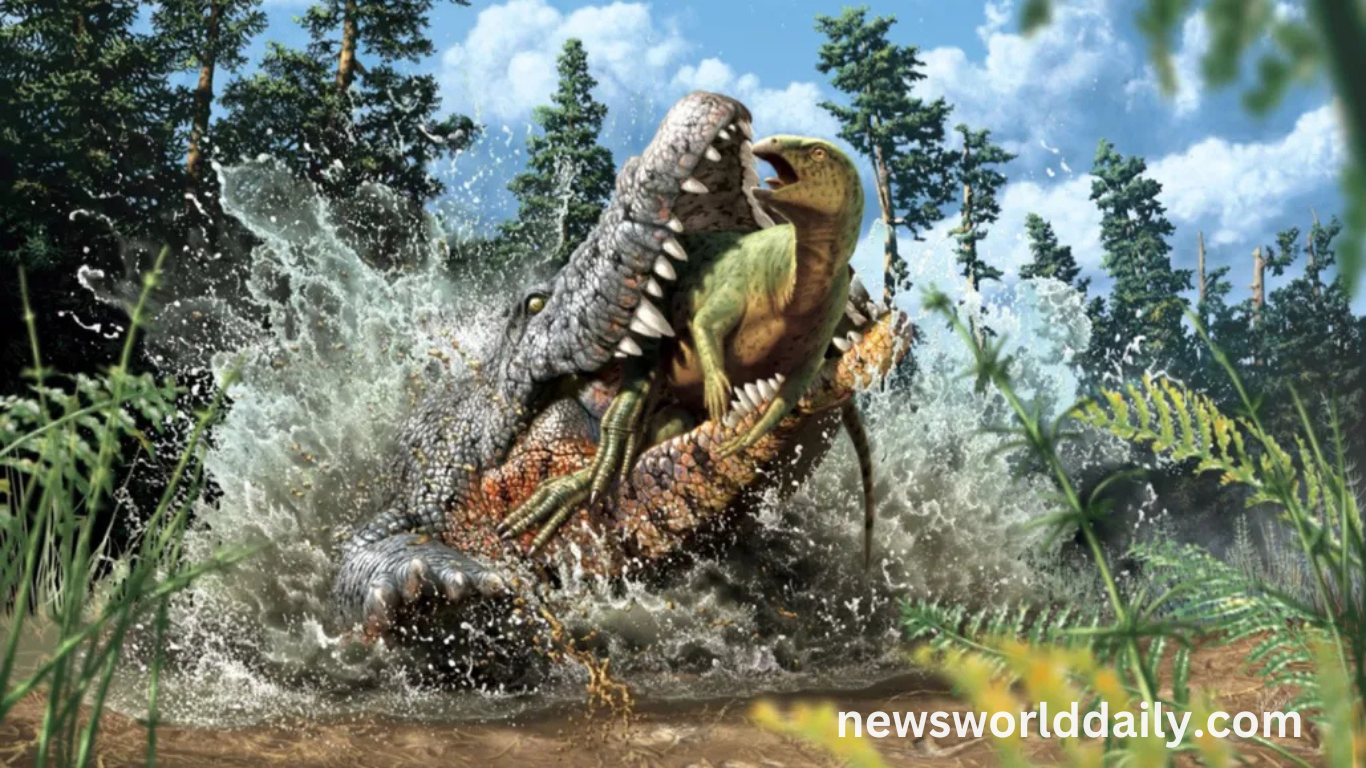The Tyrannosaurus rex stood as one of the fiercest predators to ever roam the Earth. Towering at nearly 40 feet long with a massive skull filled with serrated teeth, T. rex dominated the food chain. Its strength, speed, and bone-crushing bite made it a formidable hunter and scavenger across the North American continent.
Feeding Habits Revealed by Fossil Evidence
Fossilized remains provide strong clues to the T. rex’s carnivorous lifestyle. Bones of large herbivores like Triceratops and Edmontosaurus often show deep tooth marks and punctures matching the shape and spacing of T. rex teeth. In some cases, bones were cracked open, suggesting the dinosaur consumed not only flesh but also bone marrow — a rich source of nutrients.
Scavenger or Hunter? A Complex Diet Strategy
While often portrayed as a ferocious hunter, evidence points to a more nuanced feeding strategy. T. rex may have hunted live prey and also scavenged carcasses when opportunities arose. Its powerful nose and keen sense of smell likely helped it detect dead or dying animals from long distances. This versatility in diet increased its chances of survival in a competitive ecosystem.
Cannibalism Among Giants
Some of the most shocking discoveries involve T. rex remains bearing bite marks from other T. rexes. Paleontologists have found healed injuries and feeding damage on bones of the same species. Whether these were the result of combat, predation, or opportunistic scavenging remains debated, but it highlights a darker side of its behavior — cannibalism may have been part of its survival tactics.
Read More : The 5 Biggest, Ancient Turtles That Ever Lived Were Among the Dinosaurs
Apex Predator with Few Rivals
With no natural predators and only other T. rexes to challenge its supremacy, the species ruled its domain. This lack of competition likely contributed to its willingness to feed on others of its kind. Fierce fights over territory, mates, or food could easily turn deadly, and the victor may not have wasted the opportunity for a fresh meal.
An Ever-Evolving Picture of Prehistoric Life
As fossil analysis techniques improve, our understanding of T. rex behavior continues to evolve. From a terrifying predator to a complex opportunist, the image of this ancient creature grows more fascinating with every discovery.
Frequently Asked Questions
What did the T. rex eat?
T. rex primarily ate large herbivorous dinosaurs such as Triceratops and Edmontosaurus. It also scavenged and may have eaten other T. rexes.
Was T. rex a hunter or scavenger?
T. rex was both. Evidence shows it hunted live prey but also scavenged when the opportunity arose.
Did T. rex practice cannibalism?
Yes, fossil evidence suggests T. rex occasionally fed on other members of its own species.
How powerful was the T. rex bite?
T. rex had one of the most powerful bites in the animal kingdom, capable of crushing bones with ease.
What kind of herbivores did T. rex eat?
T. rex hunted large plant-eaters like Triceratops, Hadrosaurus, and Edmontosaurus, often targeting the weak or injured.
Why did T. rex eat bones?
Its strong bite allowed it to break bones to access the nutritious marrow inside, maximizing its food intake.
How do scientists know what T. rex ate?
Tooth marks on fossilized bones, bite wounds, and bone digestion patterns help scientists determine its diet.
Did T. rex have any predators?
Adult T. rexes had no known predators besides other T. rexes. They were at the top of the food chain.
Conclusion
The T. rex ruled its world not just through sheer strength, but through adaptability. Hunting massive herbivores, feasting on carrion, and even turning on its own kind, this apex predator displayed behaviors that reflected both instinct and survival. With every fossil unearthed, the terrifying, complex life of the T. rex becomes clearer, adding depth to our understanding of Earth’s prehistoric giants.









